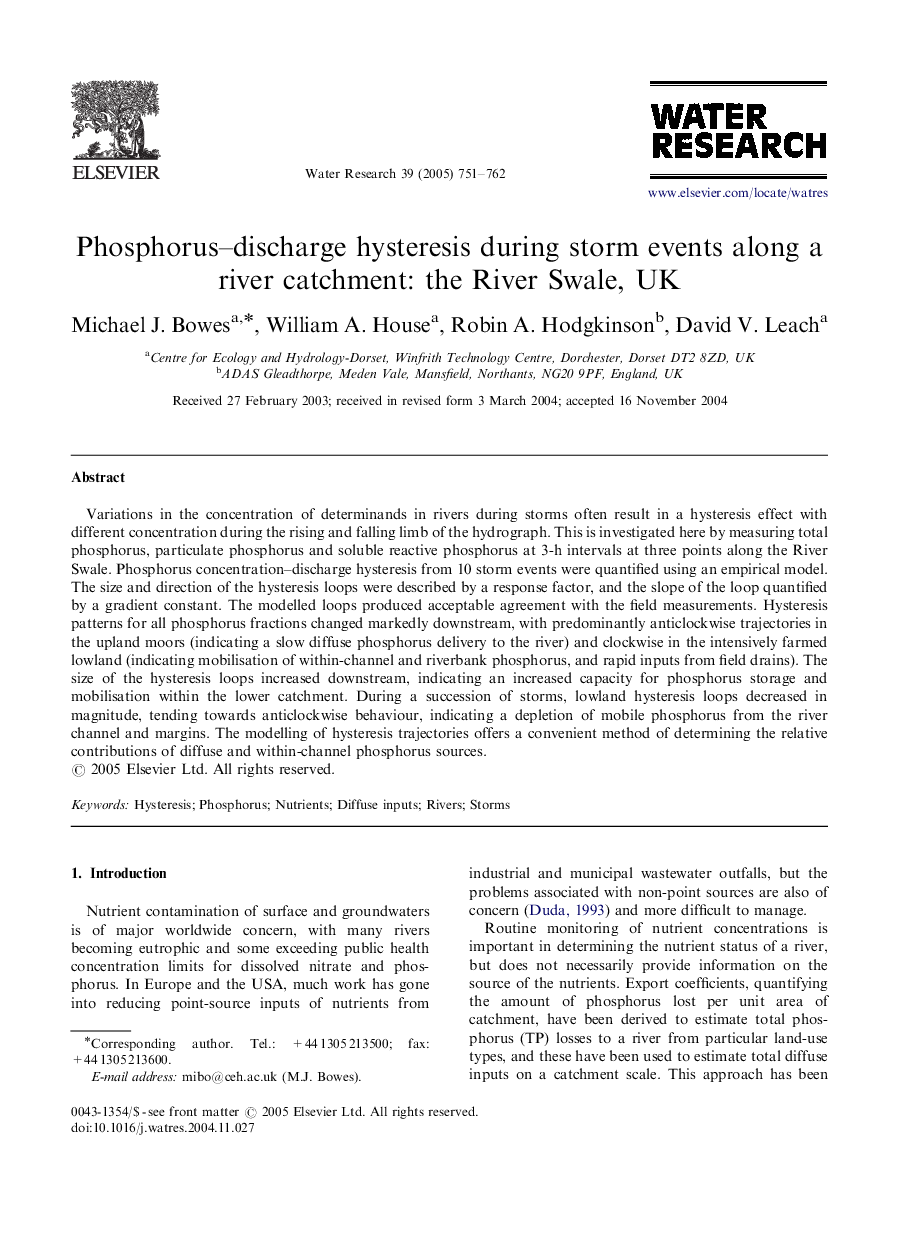| Article ID | Journal | Published Year | Pages | File Type |
|---|---|---|---|---|
| 9468280 | Water Research | 2005 | 12 Pages |
Abstract
Variations in the concentration of determinands in rivers during storms often result in a hysteresis effect with different concentration during the rising and falling limb of the hydrograph. This is investigated here by measuring total phosphorus, particulate phosphorus and soluble reactive phosphorus at 3-h intervals at three points along the River Swale. Phosphorus concentration-discharge hysteresis from 10 storm events were quantified using an empirical model. The size and direction of the hysteresis loops were described by a response factor, and the slope of the loop quantified by a gradient constant. The modelled loops produced acceptable agreement with the field measurements. Hysteresis patterns for all phosphorus fractions changed markedly downstream, with predominantly anticlockwise trajectories in the upland moors (indicating a slow diffuse phosphorus delivery to the river) and clockwise in the intensively farmed lowland (indicating mobilisation of within-channel and riverbank phosphorus, and rapid inputs from field drains). The size of the hysteresis loops increased downstream, indicating an increased capacity for phosphorus storage and mobilisation within the lower catchment. During a succession of storms, lowland hysteresis loops decreased in magnitude, tending towards anticlockwise behaviour, indicating a depletion of mobile phosphorus from the river channel and margins. The modelling of hysteresis trajectories offers a convenient method of determining the relative contributions of diffuse and within-channel phosphorus sources.
Related Topics
Physical Sciences and Engineering
Earth and Planetary Sciences
Earth-Surface Processes
Authors
Michael J. Bowes, William A. House, Robin A. Hodgkinson, David V. Leach,
